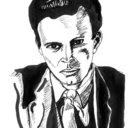Cast: Louise Bourgoin, Mathieu Amalric, Gilles Lellouche, Jacky Nercessian, Nicolas Giraud
French directors have a strange habit of flirting with Hollywood – blowing a few kisses and getting everybody hot under the collar – but then turning heel, shaking their tail feathers, and shimmying back to Gaul without a hint of reluctance or regret. Godard allowed generations of Oscar voters to pin their flags to his mast before proclaiming that the Lifetime Achievement Award they handed him “meant nothing”. Jean-Pierre Jeunet had the Thirty Mile Zone creaming for more after Amelie and A Very Long Engagement, but then waited five years to create Micmacs, a film so impenetrably “French” that it never made it beyond the festival circuit in the US. Even Renoir graced Los Angeles with his presence for a few brief years before returning to his beloved homeland. Compare that to British or German filmmakers (Hitchcock, Mendes, Wilder, Lubitsch, etc) who cancelled their return ticket the moment they glimpsed the Pacific through the Santa Monica haze.
Luc Besson is no different. Leon catapulted him into the cradle of the stars, and The Fifth Element seemed to confirm him as a major force in global blockbuster cinema. But thirteen years later, and with very little to show for himself in that space of time, he has created a peculiar and whimsical Gallic fairytale that will almost certainly, almost intentionally, not make it across the Atlantic.
The Extraordinary Adventures of Adèle Blanc-Sec is a wonderfully absurd, decadent farce without a smidgen of style or class. Adèle is a brazen bombshell of a heroine: she has the sort of ringlets and curves that have weakened men’s knees for centuries, and her brown eyes smoulder and purr until they flash with feisty energy. A director flirting with Hollywood might have had her racing around some Dystopian metropolis on a 15,000bhp motorbike, or guiding a gang of time-travelling pirates through Gary Oldman’s brain. But Besson isn’t flirting anymore… he isn’t even playing hard to get.
Adèle’s extraordinary adventures see her Raiding a Tomb™ so that she can enlist the help of a Pharoah’s physician to cure her ailing sister. The physician’s death, a few thousand years ago, is a hurdle that might intimidate a lesser hero, but not Adèle. She knows an ancient Parisian doctor who has mastered the ability to bring creatures back from the dead; but by the time she returns to Paris, the senile doctor has already bitten off more than he can chew bringing a pterodactyl back to life. The rest of the film continues in this farcical (and I don’t use that word negatively) mould, as the pompous and huffing Inspector Caponi hunts the deadly dinosaur and our maverick heroine across the Arrondissements of 1911 Paris.
At the opening, Besson is bursting with energy and eager to tell his story, but he isn’t really sure where to begin. We follow a number of openly irrelevant characters and catch snippets of information on the doctor’s metaphysical powers and the raising of the pterodactyl, before zoning in on our heroine being lowered into the Pharoah’s tomb. From here, Besson never looks back. The long sequence in the tomb is pure Indiana Jones, without even a hint of irony or a twist of originality, but it perfectly frames the energetic nonsense and slapstick that is to come.
Spielberg and Lucas knew what they needed to do with Indiana Jones: thread the story from one chase to the next as seamlessly as possible. It is a shallow and predictable technique, but it is undeniably entertaining when done properly. That is what Besson did with The Fifth Element, and he has not lost this rousing and erratic ability over the past decade. Of course, the worldly archaeologist Jones travelled all over the planet, and it is harder to make a series of chases feel dramatic when the characters are running around in circles through the streets of Paris. But Besson has created a magical and surreal Paris that perfectly suits the tone of the story, and the fact that the same locations show up repeatedly only adds to the absurd, pantomime vibe. The zipping speed of the storytelling even drips down into the minutiae of the editing: with panning cuts and visual cues ensuring that the story never calms down for a second.
When a film skips along with this sort of energy and rhythm, it is hardly surprising to find that it also possesses a natural humour. A director who knows how to race through a story must have a masterful control of timing, and this lends itself perfectly to great visual comedy. Add to this the hysterical quality of the performances from Mathieu Amalric, Gilles Lellouche, and Jean-Paul Rouve, and you have a thoroughly enjoyable, irrasicible French farce.
This film feels much closer to Jean Pierre Jeunet than Luc Besson; and indeed Besson’s bulky compatriot might feel his feathers have been ruffled by this assault on his artistic territory. Besson has forgone any of the darkness of his iconic earlier work, and has thoroughly embraced the folkloric fantasy of Jeunet’s vision. The makeup is grotesque, reminiscent of Punch & Judy puppets in some antique Romany travelling show, and the whimsical treatment of this iconic city owes much more to Amelie than Leon.
In the end, this is not a return to the global stage for Besson; but it is a delightfully entertaining French film with a giant imagination and a tiny audience… and who’s to say that isn’t exactly what he was looking for?






No comments :
Post a Comment